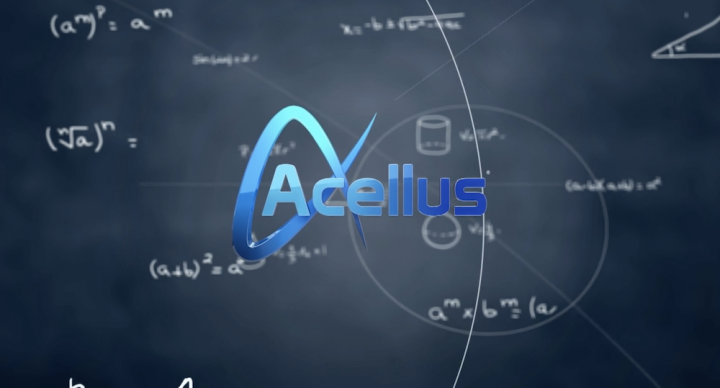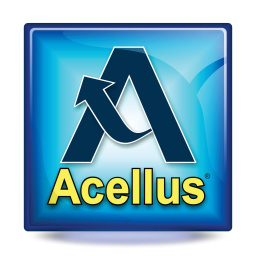Algebra I

Course Features
Course Details
Course Overview
Acellus Algebra I consists of a journey through fundamental mathematical and algebraic concepts, divided into twelve units. First, students delve into the language of algebra, mastering expressions, powers, order of operations, and various properties of numbers. It then progresses into equations, proportions, and percentages, equipping learners with problem-solving skills across one-step to multi-step equations and applications involving proportions and percentages. Afterwards we extend the understanding of inequalities and absolute values, encompassing graphing, solving, and interpreting inequalities alongside sets and absolute value equations.
Eventually, we introduce the concept of functions, exploring their graphical representations, notation, and the relationship between independent and dependent variables. Linear functions take center stage midway through the course, where students analyze rates of change, slope, direct variation, and various forms of linear equations, along with their transformations and applications in real-world scenarios.
Afterwards, the focus transitions to systems of equations and inequalities, providing multiple methods for solving systems and applying them in practical contexts. The curriculum then advances into exponential properties and functions, followed by an in-depth exploration of polynomials, factoring techniques, and quadratics.
Near the end of the course students are introduced to radicals, the Pythagorean theorem, and operations involving radicals and square root functions, as well as rational functions; covering simplification, operations, graphing, and applications. Finally, students delve into statistical analysis, where they learn about matrices, measures of central tendency, probability, and combinatorics, rounding off the curriculum with a versatile toolkit for mathematical problem-solving and analysis skills.
This course is recommended for high school and advanced middle school students who have successfully completed a Pre-Algebra course.Sample Lesson - Multiplication Counting Principle
 This course was developed by the International Academy of Science.
Learn More
This course was developed by the International Academy of Science.
Learn More
Scope and Sequence
Unit 1: Algebraic Language and Expressions This unit delves into the fundamental building blocks of algebra, starting with the comprehension of variables and expressions. Students learn the language of algebra and its rules, including powers and the crucial order of operations. Square roots, classifying numbers, and understanding inequalities are also covered, along with properties of operations. The unit progresses to more complex topics such as adding, subtracting, multiplying, and dividing negative numbers, fractions, and applying the distributive property. It concludes with simplifying algebraic expressions, an introduction to equations, and the concept of input and output in algebraic functions.
Unit 2: Equations, Proportions, and Percents Building upon the foundation laid in Unit 1, this unit focuses on solving various types of equations, including one-step, two-step, and multi-step equations, as well as equations with variables on both sides. Special equations and literal equations are introduced, alongside the application of ratios, rates, and proportions in real-world scenarios. Students explore proportions in depth, including their applications in solving problems involving similar figures and percents. The unit also covers simple interest, percent change, and percent error, providing a comprehensive understanding of proportional reasoning and its applications.
Unit 3: Inequalities, and Absolute Values Unit 3 expands on the concept of inequalities, covering graphing inequalities on a number line and solving them through various methods. Students learn to solve multi-step inequalities and those with variables on both sides, as well as compound inequalities and absolute value equations. The unit introduces interval notation and explores the relationship between absolute value and inequalities. Additionally, students investigate unions and intersections of sets, gaining proficiency in solving and graphing complex inequalities, laying the groundwork for more advanced topics in algebra.
Unit 4: Introduction to Functions This unit marks a transition to the study of functions, beginning with the basics of graphing ordered pairs and identifying functions. Students investigate patterns and distinguish between linear and nonlinear functions, exploring the concepts of independent and dependent variables. They learn to graph function rules and write their own, utilizing function notation and understanding arithmetic sequences. By the end of the unit, students are equipped to analyze various functions and apply function rules to real-world scenarios, setting the stage for deeper exploration of linear functions.
Unit 5: Linear Functions Unit 5 focuses on linear functions, emphasizing the concept of rate of change and slope. Students learn to find slope using points, understand direct variation both algebraically and graphically, and explore the slope-intercept form of linear equations. Special linear equations and transformations of linear functions are covered, along with methods for converting between different forms of linear equations. The unit also introduces concepts of parallel and perpendicular lines, scatter plots, correlation, and using trend lines for predictive analysis, providing a comprehensive understanding of linear relationships.
Unit 6: Solving Systems of Equations and Inequalities In this unit, students explore methods for solving systems of equations and inequalities, including graphing, substitution, and elimination. They learn to identify cases of infinite solutions or no solutions, applying these concepts to real-world problems. Linear inequalities in two variables are introduced, along with graphing techniques for both one-variable and two-variable inequalities. Students gain proficiency in graphing systems of linear inequalities and applying them in practical contexts, as well as exploring piecewise and step functions, expanding their toolkit for solving complex algebraic problems.
Unit 7: Exponential Properties and Functions This unit explores the fundamental properties and functions of exponential expressions. Topics include zero and negative exponents, multiplication and division of powers, conversion between exponential and radical forms, and the concepts of exponential growth and decay. It delves into raising powers to powers and products to powers, providing a comprehensive understanding of exponential operations and their applications.
Unit 8: Polynomials and Factoring Covering the essentials of polynomials and factoring, this unit begins with classifying polynomials and moves through operations like addition, subtraction, and multiplication. It emphasizes factoring techniques, including identifying greatest common factors and factoring trinomials. Students learn methods such as factoring by grouping and recognizing special cases like perfect square trinomials and difference of squares binomials, enabling them to solve polynomial equations efficiently.
Unit 9: Quadratics Focusing on quadratic functions, this unit explores their properties and various methods for solving quadratic equations. Students study vertex form, standard form, and characteristics such as axes of symmetry, zeroes, and domain and range. They master solution techniques, including graphing, factoring, using square roots, completing the square, and applying the quadratic formula. Real-world applications and connections between linear, quadratic, and exponential functions are also discussed.
Unit 10: Radicals Centered on radical expressions and functions, this unit covers simplification, operations, and solving radical equations. Students learn to simplify radicals, rationalize denominators, and combine like terms. They explore multiplication and division operations, using conjugates, and graphing square root functions. Additionally, inverse functions and trigonometric ratios are introduced, providing a foundation for understanding more complex mathematical concepts.
Unit 11: Rational Functions This unit delves into rational expressions and functions, including simplification, operations, and solving equations. Students identify excluded values, multiply and divide rational expressions, and perform polynomial division. They also learn about inverse variation and graphing rational functions, gaining skills to analyze and solve problems involving rational relationships.
Unit 12: Statistical Analysis Focused on statistical concepts and techniques, this unit covers matrices, frequency distributions, measures of central tendency, dispersion, and probability. Students explore data representation through histograms and box-and-whisker plots, and learn counting principles, factorials, permutations, and combinations. They apply theoretical and experimental probability, analyze events, and distinguish between independent and dependent events, enabling them to make informed decisions based on data analysis.






